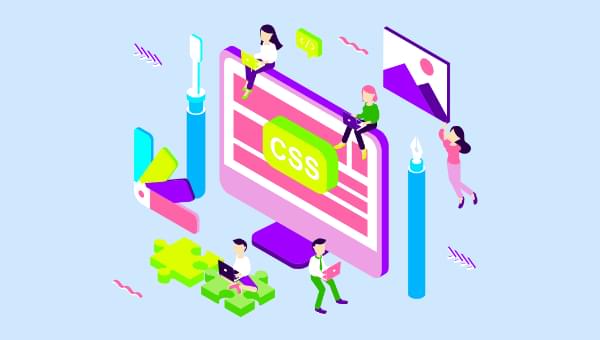Many claim CSS is not a programming language. I agree — it’s tougher. A mastery of CSS requires skills in design, determination, inventiveness, experience, as well as coding (especially when using preprocessors such as Sass).
CSS suggests layouts and styles to the browser. A browser can interpret those suggestions whichever way it chooses and, even then, the user or device can ignore or override any properties. Creating high-performance code which works well across all devices and screen resolutions is a challenge that few attempt or successfully complete. However, the rewards can be exhilarating.
Starting with the easiest, the following project suggestions will help you on your journey to CSS mastery using books available at SitePoint Premium.
1. Make a Site Printer-friendly
Visit a site you’re working on and attempt to print (or print preview) a page. Are you happy with the results?
HTML pages are a continuous medium which do not necessarily work well on printed media. Inappropriate sections, scaling, text sizes, column dimensions, and missing or cropped content all lead to an inaccessible printing experience that few developers consider.
Fortunately, print CSS can be developed within a few hours. It’s generally a matter of resetting styles (black on white), removing unnecessary sections (menus, hero images, forms, social media widgets, etc.), linearizing the layout, and reducing the paper and ink requirements.
Delve into Browser-based Developer Tools (from CSS Master) and Browser DevTool Secrets to discover how to examine and modify styles after switching to print rendering.
Applying CSS Conditionally describes how to define @media query rules including print stylesheets.
Consider your Strategy Guide to CSS Custom Properties (from New Frontiers In Web Design) to determine whether CSS variables could help with printing properties. Also consider Accessibility (from CSS Animation 101) to switch off animations or print them in the best state.
Finally, How to Create Printer-friendly Pages with CSS (from CSS Tools & Skills) provides a full print-optimization tutorial with tips to save ink and paper costs.
2. Apply Modern CSS Theming to an Existing Site
A single color scheme is boring! Everyone expects a dark mode option in their OS and applications, so why not add one to your website?
Until recently, theme switchers typically required an additional set of styles with JavaScript-powered switching controls. However, modern browsers make life easier with CSS Custom Properties (variables) and the prefers-color-scheme @media rule.
Strategies for Theming (from New Frontiers In Web Design) provides a range of ideas and considerations when designing your new theme.
Applying CSS Conditionally (from CSS Master) describes how to define @media query rules including prefers-color-scheme.
Finally, Modern CSS: Adding a CSS Dark Theme (from Modern CSS) provides a full dark-theme-enabling tutorial.
3. Rework a Form Layout
Examine a form on your website, such as an enquiry or registration form. Unless it was coded fairly recently, it’s likely to be implemented with container DIVs and float-based layouts which possibly break on smaller screens. Older forms may use unnecessary JavaScript or have poor accessibility.
A Registration Form (from Form Design Patterns) describes the best ways to design, style, and code a form using HTML5.
CSS Grid allows you to eradicate unnecessary markup and make bulletproof responsive layouts without resorting to media queries. The following CSS Grid tutorials will get you up to speed:
- Production-ready CSS Grid Layouts (from New Frontiers In Web Design)
- Creating Layouts with CSS Grid (from Master CSS), and
- CSS Grid Layout (from Jump Start Responsive Web Design)
Finally, Make Forms Great with CSS Grid (from CSS Grid Layout) provides a full tutorial which provides a grid-based form layout with float fallbacks for older browsers.
4. Make Your Site Faster
At the start of 2020, the average web page requires a 2MB download which takes 20 seconds to fully appear on an average mobile device. CSS accounts for 65KB spread over seven files. That may not seem significant, but stylesheet properties can make a difference.
Spend a few hours examining your existing site to determine whether it’s possible to replace or optimize images, fonts, and JavaScript effects with more efficient CSS. Your CSS code may grow, but overall weight will fall and performance will noticeably improve.
Testing Tools (from Jump Start Web Performance) and Debugging for UI Responsiveness (from CSS Master) explain how to use modern browser DevTools to assess performance and discover optimization targets.
Loading Assets on the Web (from New Frontiers In Web Design) describes how to use techniques such as critical CSS and progressive CSS loading to ensure stylesheets are loaded effectively. 20 Tips for Optimizing CSS Performance (from Modern CSS) provides a selection of practical tips.
Finally, Jump Start Web Performance contains dozens of quick, more intensive, and life-changing development suggestions to ensure your site remains fast for everyone.
5. Start a New Project or CSS Component
The project suggestions above can be used to improve an existing site, but there are no limitations or constraints when starting a new project from scratch. Options to consider:
- Build an online résumé. Bonus points for ensuring it’s responsive, prints well, and encoding all assets into a single HTML file which can be sent via email. (Tip: avoid adding JavaScript to ensure it won’t be blocked by email systems.)
- Build an interactive portfolio. A graphical list of all your sites with additional information when an item is clicked. A Grid layout is ideal but, if you really want a challenge, try a masonry layout. (CSS Grid cannot implement this yet, but consider how it could be achieved using CSS columns or a vertically ordered Grid layouts.)
- Code a graphical design. Perhaps choose an attractive idea from Dribbble or a similar design community and code the HTML5 and CSS3. Bonus points for creating it without a framework or JavaScript!
- Create CSS-only Images. Create a set of useful icons powered by pseudo-elements and CSS shapes, or build an image using gradients and shadows.
- Experiment with SVG and CSS animations. Try creating attractive logos, charts, progress bars, activity spinners, and more.
Developer and browser tools:
- The DOM, CSS and Animations (from Browser DevTool Secrets)
- How to Use Gulp.js to Automate Your CSS Tasks (from CSS: Tools & Skills)
- Jump Start Sass
- CSS Debugging and Optimization: Code Quality Tools (from CSS: Tools & Skills)
- CSS Debugging and Optimization: Developer Tools (from CSS: Tools & Skills)
- Life-Changing Diets (from Jump Start Web Performance)
- Visual Studio Code: End-to-End Editing and Debugging Tools for Web Developers
CSS Grid ideas:
- Redesigning a Site to Use CSS Grid Layout (from CSS Grid Layout)
- Easy and Responsive Modern CSS Grid Layout (from CSS Grid Layout)
- Progressively Enhanced CSS Layouts from Floats to Flexbox to Grid (from CSS Grid Layout)
- Redesigning a Card-based Tumblr Layout with CSS Grid (from CSS Grid Layout)
- Better Responsive Structures with Grid Systems (from Jump Start Responsive Web Design)
Responsive CSS techniques:
CSS transitions and animations:
- CSS Animation 101
- Transitions and Animations (from CSS Master)
- Using CSS Transforms in the Real World (from Modern CSS)
Combining CSS with SVG:
- Animating SVG (from Practical SVG)
- Using CSS with SVG (from CSS Master)
- Real World Use of CSS with SVG (from Modern CSS)
Now stop reading and get coding!
Frequently Asked Questions (FAQs) about Mastering Modern CSS Projects
What are some of the best practices for mastering modern CSS projects?
Mastering modern CSS projects requires a good understanding of CSS fundamentals and best practices. These include using a CSS reset to ensure consistency across different browsers, using a mobile-first approach for responsive design, and using CSS preprocessors like Sass or Less to make your CSS more maintainable. Additionally, understanding CSS Grid and Flexbox can help you create complex layouts with less code. Lastly, keeping your CSS organized and well-commented can make it easier for others (or future you) to understand your code.
How can I improve my CSS coding skills?
Improving your CSS coding skills can be achieved through consistent practice and learning. Start by understanding the basics of CSS and then gradually move on to more advanced topics. Online tutorials, coding challenges, and open-source projects can provide practical experience. Additionally, following industry experts and joining CSS communities can help you stay updated with the latest trends and techniques.
What are some common challenges when working with CSS and how can I overcome them?
Some common challenges when working with CSS include dealing with browser inconsistencies, understanding the box model, and managing complex layouts. These can be overcome by using a CSS reset or normalization, learning about the box-sizing property, and using CSS Grid or Flexbox for layouts. Additionally, using a CSS preprocessor can help manage large CSS files and make your code more maintainable.
How can I create responsive designs with CSS?
Responsive designs can be created with CSS by using media queries, which allow you to apply different styles for different screen sizes. Additionally, CSS Grid and Flexbox can be used to create flexible layouts that adapt to the screen size. A mobile-first approach, where you start with the smallest screen size and gradually add styles for larger screens, can also help create effective responsive designs.
What are some advanced CSS techniques I should learn?
Some advanced CSS techniques you should learn include CSS animations and transitions, CSS variables, and CSS custom properties. Additionally, understanding how to use pseudo-elements and pseudo-classes can help you create more complex styles. Learning about CSS preprocessors like Sass or Less can also be beneficial.
How can I optimize my CSS for better performance?
Optimizing your CSS for better performance can be achieved by minimizing the amount of CSS you use, using shorthand properties, and reducing the use of expensive CSS properties. Additionally, using a CSS minifier can help reduce the file size of your CSS, leading to faster load times.
What are some resources for learning advanced CSS?
There are many online resources for learning advanced CSS, including online tutorials, coding challenges, and documentation. Websites like CSS-Tricks, MDN Web Docs, and Smashing Magazine provide in-depth articles and guides on various CSS topics. Additionally, following industry experts and joining CSS communities can provide valuable insights and learning opportunities.
How can I debug CSS issues?
Debugging CSS issues can be done using the browser’s developer tools, which allow you to inspect elements, view applied styles, and experiment with different styles in real-time. Additionally, understanding the CSS cascade, specificity, and inheritance can help you understand why certain styles are not being applied as expected.
How can I keep my CSS organized and maintainable?
Keeping your CSS organized and maintainable can be achieved by following a consistent naming convention, using comments to describe your code, and organizing your CSS into logical sections or separate files. Additionally, using a CSS preprocessor can help manage large CSS files and make your code more maintainable.
What is the role of CSS in web development?
CSS plays a crucial role in web development by controlling the look and feel of a website. It allows you to apply styles to HTML elements, create responsive designs, and even create animations and transitions. Without CSS, web pages would be plain and unstyled, making it a vital tool for any web developer.
Craig is a freelance UK web consultant who built his first page for IE2.0 in 1995. Since that time he's been advocating standards, accessibility, and best-practice HTML5 techniques. He's created enterprise specifications, websites and online applications for companies and organisations including the UK Parliament, the European Parliament, the Department of Energy & Climate Change, Microsoft, and more. He's written more than 1,000 articles for SitePoint and you can find him @craigbuckler.








